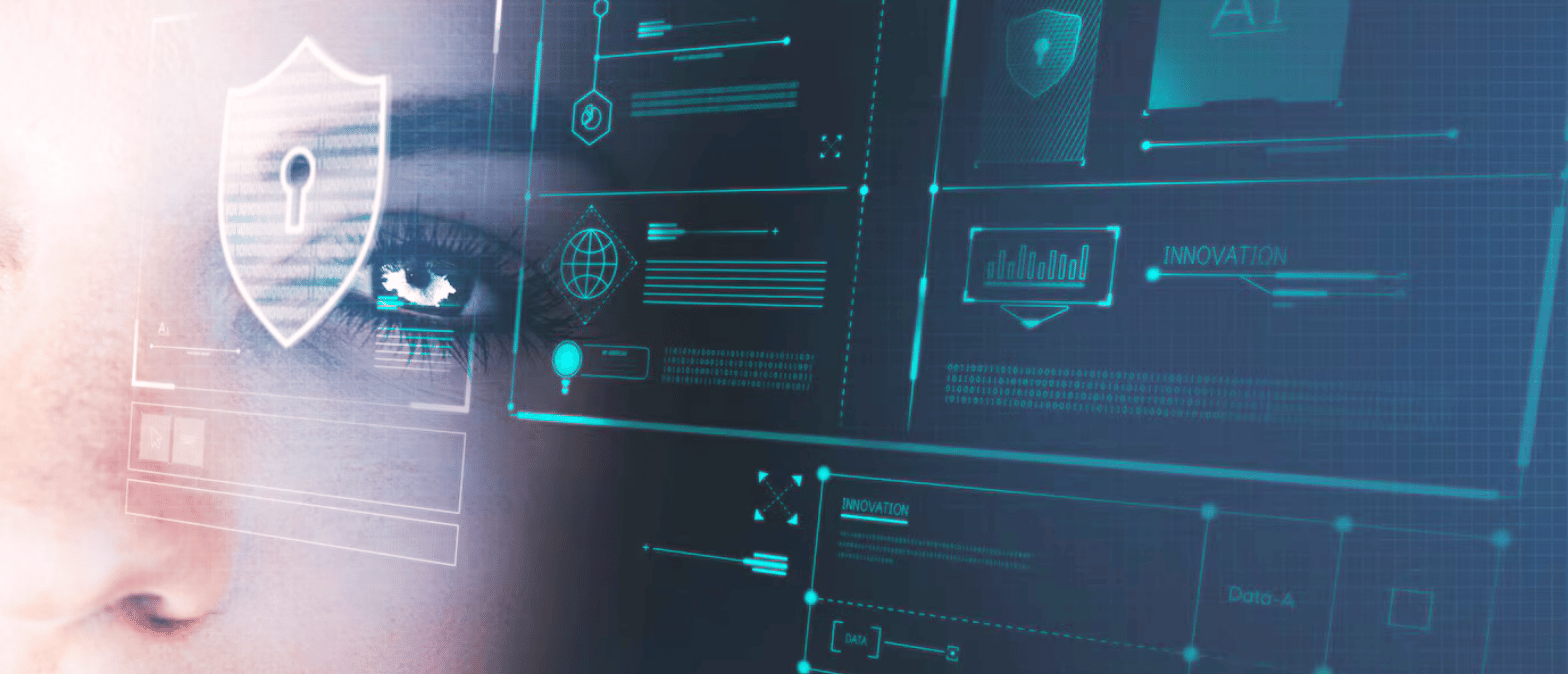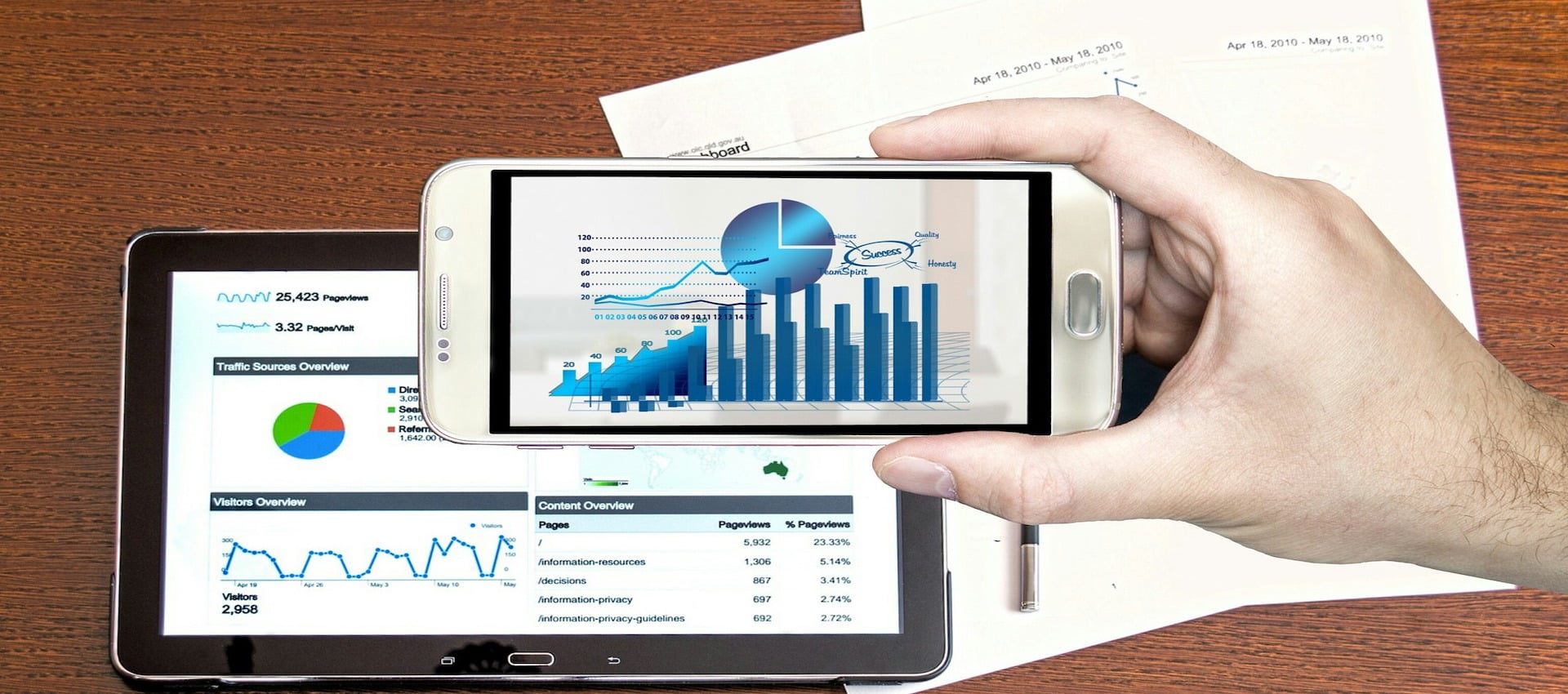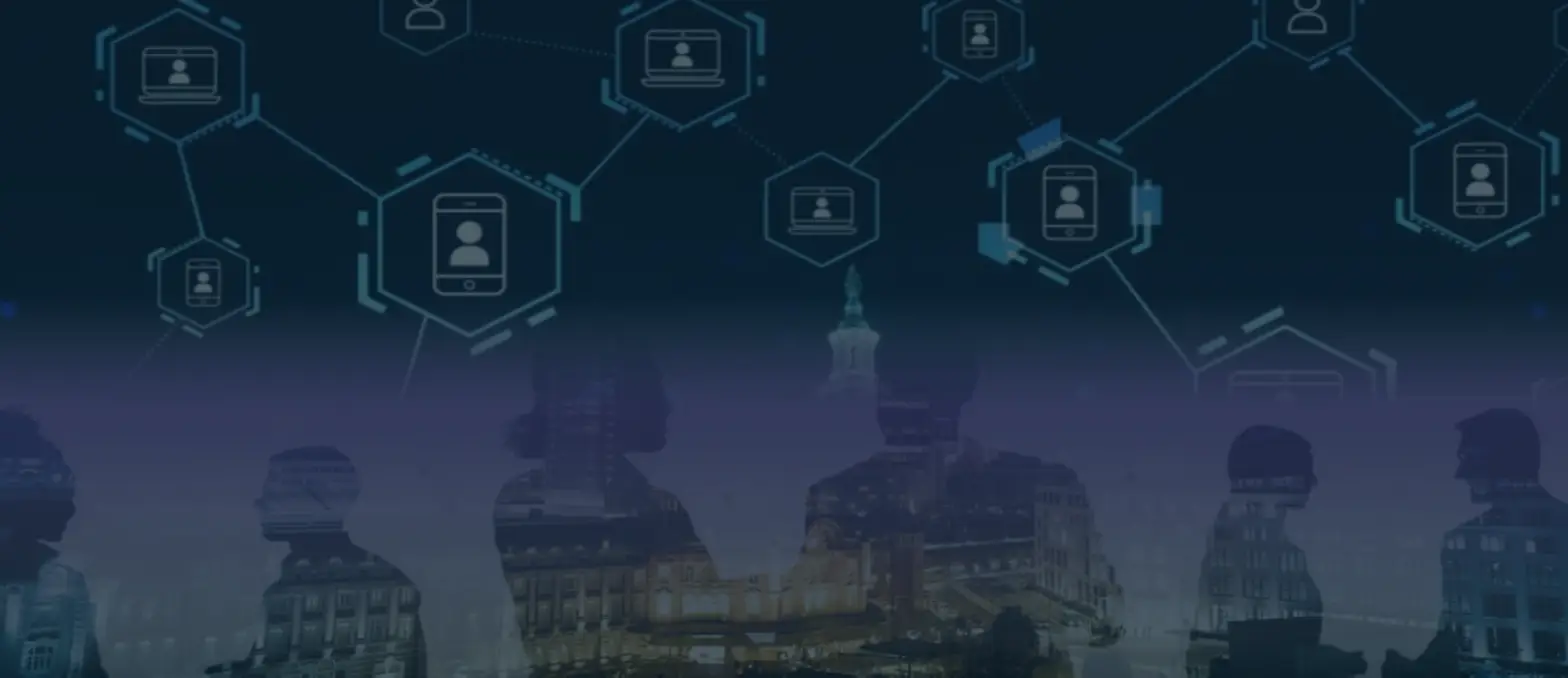Augmented reality (AR) and virtual reality (VR) technologies have transformed how we interact with our surroundings. These technologies are rapidly advancing, and as a result, they are revolutionizing how different industries operate. From healthcare to education, gaming to manufacturing, AR VR technology is used to create immersive experiences and solve complex problems. In this blog, we will take a closer look at the impact of AR VR technology on various industries and explore how it is transforming the future of work and life.
Table of Contents
A brief overview of AR VR Technology
Augmented reality (AR) and virtual reality (VR) technology creates alluring digital experiences that enrich and transform our lives. AR blends digital elements like images, videos and texts into the real-world environment around us. VR generates entirely virtual experiences, transporting us to digital worlds.
AR exists on a spectrum from minimal interplay to fully immersive experiences. At the lighter end is spatial AR, which transforms the space around us. Object AR focuses AR elements on physical objects. Complete immersion AR provides a seamless blending of virtual and physical elements. VR encompasses 360-degree experiences, arcades, cinema, and open VR worlds. Some AR combines visuals with audio, haptics, location triggers and multi-sensory stimulation.
VR provides a visual-spatial immersive experience along with convincing audio spatialization. Both aim for more natural interactions, seamless transitions between worlds and holistic experiences. Hybrids like AR/VR comics, AR films and VR live streams are also emerging.
Benefits
Benefits of AR/VR include intuitive interfaces, engaging experiences, productivity gains, inclusive access, cost/time savings, safety improvements and benefits for learning/therapy. Risks include distraction, discomfort, privacy/security issues and biased/misleading content. Responsible development is needed to realize benefits and avoid endangering users or society.
AR/VR technologies continue advancing to provide immersive, intuitive and transformative experiences. Improvements include higher quality/resolution video, more expansive fields of view, more accurate tracking/response times, photorealistic graphics, natural interfaces and multi-sensory stimulation. Costs are declining while capabilities expand, enabling more accessible and ubiquitous use.
Integrating with other technologies like artificial intelligence (AI) enhances AR/VR. AI enables personalization, personal coaching, education, skills learning, remote collaboration and more through AR/VR experiences. These technologies combine to create truly immersive, personalized and seamless hybrid experiences across the digital and physical world around us.
The progress of augmented and virtual reality depends on developing and applying these technologies ethically, benefiting humanity, not exploiting possibility. With purpose and care, not just innovation, AR/VR can positively inspire the world ahead. But that path begins today with every choice to build towards the greater good above all else.
Importance of AR and VR technology in different industries
Augmented reality (AR) and virtual reality (VR) technology provide mesmeric digital experiences that transform many industries. AR enhances the real world with elements like images, videos and text integrated into the space around us. VR generates entirely virtual experiences, transporting us to digital worlds.
These technologies bring opportunities for growth, innovation and improved experiences to industries like retail, entertainment, education, healthcare, manufacturing, government and more. But progress depends on developing and applying AR/VR ethically and responsibly in each industry.
Retail
Retail uses AR to visualize products in realistic detail and allow virtually trying on clothes/home decor. It enhances customer experience, increases engagement and boosts conversions. VR also provides immersive shopping and product visualizations inspiring discovery and impulse purchases. Benefits include happier customers, higher loyalty and revenue growth.
Entertainment
Entertainment leverages VR/AR for thrilling experiences, escape from everyday life, social interaction at a distance and immersion in stories. It also enhances engagement and presence for music, Sports, Spiel and other live events or creative works. Benefits include new revenue streams, franchise resilience, fan passion and inclusive access.
Education
Education taps into AR/VR to bring lessons to life in memorable ways. Technologies facilitate experiential learning, skills practice, adaptive learning experiences and open-world lifelong learning environments. Benefits include deeper understanding, motivation, inclusion and real-world preparation. Distraction, discomfort, and privacy/security risks must also be addressed.
Healthcare
Healthcare uses VR for pain distraction, exposure therapy, rehabilitation, education and mindfulness practices. AR enables procedural simulations, interactive health documentaries and at-home wellness programs. Benefits include decreased pain/anxiety, improved outcomes, cost efficiencies and patient empowerment. Progress must avoid harm, ensure inclusivity and consider long-term immersive technology use’s health/ethical impacts.
Manufacturing
Manufacturing leverages AR/VR for product visualizations, design collaboration, worker training, maintenance optimization and safety improvements. Benefits include less waste, higher productivity, reduced errors/risk and optimizing resource use. Costs and access must also remain feasible for widespread implementation.
AR and VR Technology in the Entertainment Industry
Augmented reality (AR) and virtual reality (VR) technology provides immersive digital experiences set to transform the entertainment industry. AR enhances entertainment by blending digital elements into the real world around us. VR generates entirely virtual experiences, transporting us to digital worlds.
These technologies enable new ways of experiencing stories, engaging with creative works and sharing entertainment experiences. They provide an escape from everyday life, social interaction at a distance and emersion in fictional worlds. Entertainment benefits include new revenue streams, franchise resilience, passionate fandom and inclusive access. Risks around distraction, discomfort, privacy/security and biased/misleading content must also be addressed.
AR enhances entertainment through spatial AR installations, object AR layers bringing digital characters/elements into real-world spaces and pseudo-haptic feedback via spatialization and sound conveying shape/texture. Users can feel the weight of digital objects, hear their footsteps on the virtual ground and more while remaining physically present. Benefits include deeper immersion, interactive exploration and shared experiences.
VR provides 360-degree views, spatial 3D audio, realistic graphics and seamless transitions between virtual and physical realities for complete immersion in entertainment experiences. It includes VR films/TV, games, live events/concerts, amusement parks and open VR worlds. Benefits include escapism, presence, social interaction at a distance, customization and fear-conquering thrill-seeking. But long-term immersion effects on physical/mental health, real-world functioning and relationships require consideration.
VR allows the creation of entirely impossible spaces/worlds, fantastical creatures and surreal, strange experiences limited only by imagination. It enables the creation of interactive stories/adventures, multiplayer experiences, VRChat-style virtual spaces for social interaction/creativity and even VR cinema providing an ENTIRE screen-based experience. Benefits include creative freedom, social connection and shared wonder/discovery despite physical separation. But responsibility comes with these possibilities, as irresponsible content/design could spread misinformation, facilitate addiction or inspire distress.
AR/VR also enable new forms of entertainment like interactive plays/musicals, immersive museums, VR stand-up comedy, VR television, VR leaf peeping and more. They provide deep sensory dives, personalized engagement tailored to individuals and even therapeutic benefits of joy/escape. Memorable, moving and meaning-inspiring experiences become possible through technological tools to elevate entertainment beyond mere diversion or distraction.
AR and VR Technology in the Healthcare Industry
Augmented reality (AR) and virtual reality (VR) technology provides immersive digital experiences set to transform healthcare. AR enhances healthcare by blending digital elements into the real world around us. VR generates entirely virtual experiences, transporting us to medical simulations and environments.
These technologies enable new ways of diagnosing, treating health conditions, facilitating rehabilitation, improving patient education and empowering wellness practices. Benefits include decreased pain/anxiety, improved outcomes, cost efficiencies and patient empowerment. But risks around distraction, discomfort, privacy/security, bias and long-term health effects must be considered seriously before broad implementation.
AR enhances healthcare through procedural AR guides overlaying digital instructions/visualizations onto the physical patient/procedure. Surgeons can see vital structures/systems overlaid on an accurate scale, aiding complex surgeries. Patients can visualize medical scans/anatomy for better understanding. Benefits include optimized outcomes, empowered patients, reduced errors/complications and cost savings. However, if applied irresponsibly, AR must not obscure real-world surroundings, distract from critical sights/senses or spread misinformation.
Implications:
VR provides immersive medical simulations, virtual clinical environments and virtual reality therapies. It includes VR for pain management, exposure therapy, rehabilitation, education and mindfulness practices. Benefits include decreased anxiety/discomfort, improved outcomes, cost efficiencies and patient/staff empowerment. But risks of distraction, discomfort, privacy/security concerns and long-term health effects require careful consideration before implementing broadly.
VR medical simulations enable practising procedures repeatedly, learning complex skills and trying different techniques/approaches without endangering actual patients. Virtual clinical environments provide interactive medical education, practising delivering difficult news or sensitive procedures and assessing skills/competency. VR therapies use immersion and interaction for distraction from pain, gradual exposure to anxiety-provoking stimuli and rehabilitation following injury. Benefits include optimized outcomes, inclusion, cost-effectiveness and prevention of harm.
AR and VR Technology in the Education Industry
Augmented reality (AR) and virtual reality (VR) provide immersive learning experiences transforming education. By blending digital content with the natural world or creating simulated environments, AR/VR enables deeper understanding, engagement and interactivity.
AR overlays digital graphics, animations, audio, videos and GPS data on the natural world around us. AR enhances classroom learning, field trips, textbooks, workbooks, and more in education. Students can visualize abstract concepts like molecular structures, view historical reenactments, interact with graphical models of systems/processes and receive intuitive guidance through complex procedures or documentation.
It provides users with computer-generated sensory environments. For education, VR provides a flexible, interactive space for experiential learning. Students can explore realistic replicas of historical sites, ecosystems, scientific phenomena, data visualizations or workplaces. They develop an intuition for concepts that are difficult to grasp visually in 2D mediums. VR also facilitates collaborative learning and social-emotional development through shared, multi-user experiences.
Integrating AR/VR benefits students and teachers across grade levels, subjects and learning types (visual-spatial, auditory, reading-writing, kinesthetic, etc.). They enhance engagement, improve retention, strengthen the real-world application of knowledge and support differentiated, personalized learning experiences. AR/VR provide adaptive guidance, 360-degree instructional content and opportunities for creative thinking to motivate continuous learning beyond the classroom.
For teachers, AR/VR opens up new possibilities for instruction. They gain tools to bring concepts to life, inspire curiosity and critical thinking, facilitate accessible learning and adapt lessons for diverse student needs, skills and interests. AR overlays instructions, and VR enables student-centred exploration, enhancing teaching methods’ effectiveness and inclusiveness.
While AR/VR for education is evolving, early applications show tremendous potential. Headsets and smart devices provide affordable access to immersive learning at scale. Developers and research organizations work to create content, frameworks and best practices. Pilot programs in schools worldwide demonstrate learning gains, behaviour/engagement improvements and new paths to personalized, experiential education that level the playing field.
AR and VR Technology in the Retail Industry
Augmented reality (AR) and virtual reality (VR) enable immersive shopping experiences to transform retail. By blending digital content with physical products or creating simulated brand experiences, AR/VR engages customers, enhances education and inspires loyalty.
Integrating AR/VR benefits retail in meaningful, measurable ways. They increase customer engagement and conversion, improve brand retention and loyalty, enhance product education and understanding, provide personalized recommendations and experiences, facilitate impulse purchases and inspire customer creativity/collaboration.
Digital information on top of physical products. In retail, AR allows customers to view detailed 3D product models, see how items might look in their home environment, view 360-degree spin animations, read specifications/features, see how clothes might fit different body types, or scan products to find the best available local price. It provides an interactive, engaging product catalogue to inform purchase decisions.
For retailers, AR/VR opens opportunities to create innovative experiences, engage tech-savvy customers, support e-commerce growth and optimize physical store foot traffic/conversion. They gain tools for interactive product marketing, 360-degree brand storytelling, personalized product guidance, collaborative product design/ideation with customers and data on customer interests to improve product selection, recommendations and development.
VR fully immerses users in computer-generated brand experiences. For retail, VR can create branded destinations where customers can explore, touch and interact with products in an engaging virtual space. They can view products at their actual size, try new outfits through interactive virtual mirrors, see 360-degree views of the latest home furnishings and decor ideas, or take virtual product demonstrations/classes. VR builds brand loyalty and word-of-mouth marketing through memorable experiences.
AR and VR Technology in the Real Estate Industry
Augmented reality (AR) and virtual reality (VR) technology provides immersive digital experiences transforming the real estate industry. AR enhances real estate by blending digital elements like images, videos and text into the real-world spaces around us. VR generates entirely virtual experiences, transporting us to digitally rendered properties and environments.
These technologies enable new ways of visualizing, experiencing, customizing and sharing property listings. They make properties feel present even when not viewed in person and facilitate flexible, personalized home searching. Benefits to real estate include happier home buyers, higher customer loyalty, decreased realtor workload and improved accessibility. But risks of distraction, discomfort, privacy/security issues, bias and misleading information must be addressed before widespread adoption.
AR provides immersive property previews through spatial AR, blending digital property details, 360-degree views, dimension visualizations and design elements into real-world spaces. Buyers can visualize how furniture or decor might look within a space or see properties as if they have already purchased. Realtors can offer customized, interactive walkthroughs tailored to clients’ needs and preferences. Benefits include engagement, realism and inclusion. Responsible development is critical to avoid confusion, distraction or deception.
VR offers immersive virtual property tours with spatial 3D audio, photorealistic graphics, haptic feedback and transition between virtually rendered properties and the real world. People can tour listings from anywhere, experience space and layout in detail without travelling in person and make informed buying decisions remotely. Benefits include accessibility, convenience, inclusion and opportunity for underserved communities. But risks of addiction, discomfort, misleading information and real-world disability must be guarded against, especially with widespread implementation.
VR also enables design visualization, allowing viewing properties with different layouts, furnishings or stylistic elements rendered in immersive virtual detail before purchasing. It aids decision-making and considerations around how spaces might function for intended uses. Benefits include confidence, reduced regret and optimized choices. However, VR is not substitutive and in-person viewing remains critical, especially for assessing the structure, systems, dimensions, conditions and building materials.
Get Ready for creating captivating experiences with our AR VR solutions
Future of AR VR Technology
The future of augmented reality (AR) and virtual reality (VR) technology is bright, with continued progress poised to make immersive digital experiences more seamless, ubiquitous and transformative. Advancements will enhance realism, expand reach, lower costs, increase personalization, provide new therapeutic benefits and shape how we live, work, learn, connect and heal together as society progresses.
Higher resolution/fidelity VR and AR will sometimes make experiences feel nearly indistinguishable from physical reality. Improvements in fields of view, tracking precision, response times and interface design will minimize immersion-breaking effects. Graphics will reach near-photorealism or even photorealism for profoundly moving and meaningful experiences.
Mobile AR/VR will make immersive tech ubiquitous, accessed via smartphones, tablets, headsets and contact lenses. Lightfield/varifocal displays enable focusing at different depths, motion parallax and new interface concepts. Continued reduction in cost, size/weight and power consumption will make AR/VR accessible as a mainstream medium rather than a niche technology.
Cloud/network connection will provide access to shared virtual spaces and immersive experiences/content streaming. Advances in networking, computing, storage and algorithmic AI will make virtual individuals, personalized avatars, AI companions and even simulated worlds/realities possible. Collaborative virtual workspaces, social connections, entertainment/travel and more become achievable between geographically distant users.
Extended reality (XR) will continue blending VR, AR and mixed reality (MR) technologies. .Advancements across the medium lead to new modalities, like simulated synaesthesia, comprehensively recreating how we sense and interpret the world around us.
While opportunities abound, responsibility must guide progress to benefit humanity – not exploit possibility. Safety, privacy, inclusivity, ethics and well-being must be prioritized over profits and presence. With a balanced perspective considering impacts beyond experience alone, XR can positively transform and transcend rather than haunt or endanger. The future depends on progress that empowers rather than undermines life, connection and dignity in pursuit of presence, realism and stimulation. XR can inspire meaning far more profound than mere indulgence by choosing purpose over excess at every turn. And that journey has only just begun.
Conclusion
In conclusion, AR VR technology is revolutionizing different industries by creating immersive experiences and enabling us to solve complex problems. From healthcare to education, retail to manufacturing, AR VR technology is transforming how we work and live. As we continue to advance these technologies, the possibilities for their use in different industries are limitless. As such, we must continue to explore and embrace the potential of AR and VR technology to bring about a better and more immersive future. Get in touch with A3logics to consult about AR VR solutions
Frequently Asked Questions (FAQs)
Why is AR useful?
AR enhances the real world with digital elements, bringing information to life in memorable and meaningful ways. It makes experiences more engaging, informative and intuitive. AR is valid for:
- Enhancing learning- AR provides interactive educational experiences that inspire interest in topics and topics. It brings concepts to life and facilitates experiential learning.
- Improving work efficiency- AR provides just-in-time visual guidance, interactive procedures and adaptive assistance tailored to specific tasks. It reduces errors and optimizes workflows.
- Enabling new creative expression- AR provides a canvas for blending digital and physical worlds, crafting immersive stories and building multimedia interactive experiences. Creators gain new creative possibilities for self-expression.
- Improving the quality of life- AR enhances daily experiences by providing useful information and assistance integrated seamlessly into the spaces around us. In addition, it makes life more convenient, enjoyable and helpful.
What cameras are used in AR?
AR uses cameras that can perceive and track features of the real-world environment around it. It includes:
- RGB cameras :provide colour images of the environment in which AR systems can recognize and register digital elements. RGB cameras are used in many AR smart glasses and mobile apps.
- Depth-sensing cameras: Detect depth and surface measurements of the natural world using technologies like structured light, time-of-flight or stereo vision. It provides 3D spatial mapping, which AR relies on to place and scale digital content overlapping the real world properly.
- Infrared cameras: Can detect infrared light invisible to the human eye but reflected off objects in the real-world environment. It enables tracking movement and features even in low-light conditions. AR systems use infrared cameras for 6DOF motion and position tracking of the device itself to align digital elements with the real world properly.
What is an example of AR VR technology?
AR examples:
- AR smart glasses: Wireless glasses with cameras, displays, motion sensors and computing are needed to perceive and augment the real world with digitally overlaid information and objects. Examples include Microsoft HoloLens, Magic Leap One and Meta 2.
- AR mobile apps: App experiences that utilize device cameras, sensors and computing for blending digital information (images, text, animations, models) into live camera feeds of the real-world space around the user. Examples include IKEA Place, HONOR View 20 AR Mode and Pokémon Go.
- AR projection mapping: Images, video projections, 3D light fields or other visual elements that are projected and aligned with real-world surfaces and spaces in an AR experience. It is used for advertising, entertainment, interactive installations, education and more.
- AR heads-up displays (HUDs): AR elements like graphics, text, icons, and indicators that are overlaid directly on top of camera feeds and one’s forward view of the real world. HUDs make information integrated into the user’s reality rather than obscuring it. They were used in aviation, manufacturing, vehicles, and worksites.
VR examples:
- VR headsets: Head-worn displays that generate fully immersive virtual experiences. It includes headsets like Oculus Quest, HTC Vive, PlayStation VR, Google Daydream View, etc.
- VR rollercoasters and rides: Physical rollercoasters and rides enhanced with virtual elements, visuals and ride-through experiences using VR headsets. It places the rider within an immersive simulated thrill ride experience.
- VR escape rooms: Players are placed within a virtual recreation of a physical escape room. Using VR, multiple players can experience the escape room from different locations while collaborating to solve puzzles and escape within a time limit.
Where is AR used?
In entertainment and gaming
AR enhances real-world spaces with interactive digital elements for gaming, puzzles, scavenger hunts, tours and more. Examples include Pokémon Go, Jurassic World Alive and Ghostbusters World.
For retail and shopping
AR provides interactive product previews so customers can view items digitally overlaid in the real showroom or home spaces. Examples include IKEA Place, Sephora VR Makeover and Nike AR Nikeland.
In education and training
AR provides interactive lessons, tutorials, simulations, visualizations and hands-on practice opportunities within real or simulated environments. Examples include Aurasma, Vivid Vision and Meta 4.
For industrial and commercial use
AR enhances real workspaces and tasks with digital guidelines, indicators, simulation, workflow optimization, collaboration and remote assistance. Examples include design, manufacturing, automobile repair, field service, and architecture.
In healthcare and medicine
AR provides interactive visualizations of medical scans, aided complex procedures, anatomy and physiology simulation, datasets analysis, and remote consultation/collaboration. Examples include anatomy education, surgical guidance, prosthetics and rehab.
For navigation and wayfinding
It interactive maps, directions, points of interest, indicators and translucence in real-world spaces to guide navigation in environments like airports, museums, universities, hospitals or unfamiliar public places. Examples include Wikitude, Aortis and Oculus Venues.






